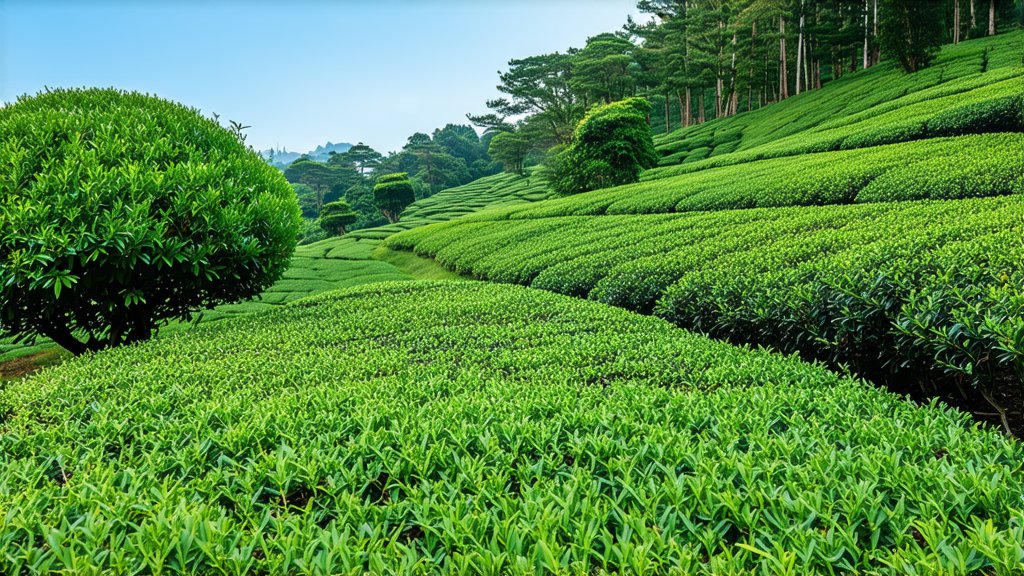
Nestled within the rich tapestry of Chinese tea culture lies a gem that has captivated tea enthusiasts for centuries – Tieguanyin, a variety of oolong tea renowned for its unique flavor profile and aromatic complexity. This exquisite tea, hailing from the Anxi region in Fujian Province, embodies the essence of traditional Chinese tea-making artistry and offers an unparalleled sensory experience to those who indulge in its depths.
Historical Roots and Legend
The history of Tieguanyin dates back over 300 years, with its origins shrouded in both historical records and local folklore. According to legend, the tea was discovered by a poor scholar named Wei Yin during the Qing Dynasty. As the story goes, Wei Yin stumbled upon a wild tea plant while he was studying in the remote mountains of Anxi. Intrigued by its distinct fragrance and taste, he meticulously cultivated and propagated the plant, eventually creating what we now know as Tieguanyin. The name itself, which translates to "Iron Buddha," is said to reflect the heavy, robust leaves of the tea bushes and their resilient nature.
Varieties and Characteristics
Tieguanyin is not just a single tea but rather a category that encompasses several sub-varieties, each with its own distinct characteristics. The most celebrated among them include Ximen Zhong (Western Variety), Changkeng Nancang (Long Cannon), and Ben Shan (Mountain). These variations differ in terms of leaf shape, growth patterns, and, ultimately, the nuanced flavors they impart when brewed.
Ximen Zhong, also known as Red Heart Rou Gui, is perhaps the most iconic representation of Tieguanyin. Its leaves are broad and flat, often twisted into tight spirals, revealing a hint of red at the edges when unfurled—hence the name "Red Heart." This variety is celebrated for its rich, creamy texture and a complex bouquet that intertwines floral notes with sweet orchard fruits and a whisper of roasted nuts.
Changkeng Nancang, on the other hand, features longer, more slender leaves that resemble bamboo shoots. It is prized for its crisp, clean taste with pronounced vegetal and mineral undertones, making it a favorite among those who appreciate a lighter, more refreshing cup.
Ben Shan, meaning "mountain," refers to teas grown on high-altitude slopes. These teas boast a more pronounced mountain character, characterized by a brisk astringency balanced by subtle floral and fruity notes, reflecting the pristine environment from which they originate.
Crafting the Perfect Cup: The Art of Tieguanyin Production
The journey from tea bush to cup involves a meticulous process that marries tradition with precision. The first step is careful hand-picking, typically done in multiple rounds to ensure only the finest buds and leaves are harvested. Following this, the freshly picked leaves undergo withering under the sun or indoors to reduce moisture content and initiate oxidation.
Next comes the crucial stage of rolling and tossing, where skilled artisans manipulate the leaves to release their essential oils and shape them into tight coils or balls. This process not only enhances the tea's appearance but also facilitates even drying and oxidation.
Oxidation is then controlled through a series of pauses and restarts, allowing the leaves to develop their signature oolong character—a balance between the freshness of green tea and the fuller body of black tea. After reaching the desired level of oxidation, the leaves are fired in woks or roasters to halt further oxidation and lock in their unique flavors.
Finally, sorting and grading take place, ensuring that only the highest quality leaves make it into the final product. Each step demands expertise and an intimate understanding of the tea, resulting in a beverage that is as much a work of art as it is a source of refreshment.
Savoring Tieguanyin: The Gongfu Tea Ceremony
To truly appreciate Tieguanyin, one must engage in the ancient practice of Gongfu tea ceremony, a ritualistic approach to brewing that emphasizes precision, patience, and mindfulness. Here’s a simplified guide to experiencing Tieguanyin in its full glory:
-
Prepare Your Tools: Gather a Gongfu tea set, including a small Yixing clay teapot or a Gaiwan (lidded bowl), fairness pitcher, tasting cups, and a tea tray.
-
Warm the Utensils: Rinse the teapot and cups with hot water to warm them up and remove any residual flavors.
-
Measure the Tea: Use about 5 grams of loose leaf Tieguanyin per person. Place the leaves into the preheated teapot.
-
Initial Rinse: Pour hot water (around 90-95°C) over the leaves briefly, then discard this first infusion to 'wake up' the tea and cleanse it of any impurities.
-
Steeping: For subsequent infusions, pour hot water over the leaves and let it steep for approximately 15-30 seconds for the first brew. Gradually increase steeping time with each infusion, adjusting based on personal preference.
-
Pouring and Tasting: Decant the brewed tea into the fairness pitcher to even out the flavors before distributing it into the tasting cups. Take a moment to admire the tea's color, inhale its aroma deeply, and then savor each sip slowly, allowing the flavors to unfold on your palate.
-
Multiple Infusions: Tieguanyin is known for its enduring flavor and can be steeped multiple times (up to 7-10 times), with each infusion revealing new layers of complexity.
Conclusion
Tieguanyin stands as a testament to China's profound tea heritage, offering a window into the intricate world of oolong teas. Its rich history, diverse varieties, meticulous production process, and the meditative act of its preparation through Gongfu brewing all contribute to its status as a cherished cultural icon. For international tea lovers seeking an adventure in taste and tradition, exploring Tieguanyin is akin to embarking on a journey through time and terroir, revealing the soul of Chinese tea culture in every delicate sip.